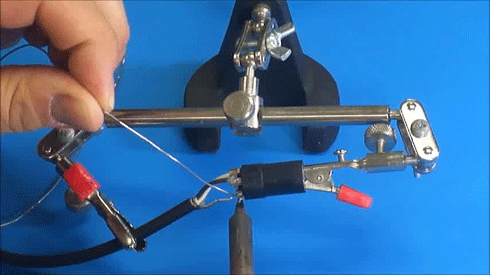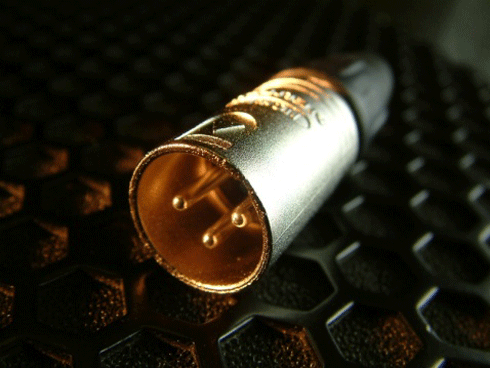Wiring Up an XLR
Professional video connectors are crimped. But there's one professional connector that is still soldered, the venerable XLR. It has become the universal standard for audio wiring. It is made by many manufacturers including Neutrik, Switchcraft, Amphenol and many others. You can even find some made by ITT Canon, who invented the connector in the early 1950s. And now Belden is working on a video to show you how to solder a mic cable (or a line-level cable) into this connector and will post it as soon as it's available.
 However, I wanted to add some comments which are not addressed in the video. Foremost is the tendency of some plastics to melt when heat is applied. And the problem is, the higher the performance of the cable, the more likely that plastic is to melt. The converse is equally true. The lower the quality (not the price, mind you, but the performance of the cable), the less likely it is to melt. If you have rubber insulated singles, such as Belden 8412 or our new super-strong 1776, you could hold a soldering iron on these wires for a long time. You might eventually burn through them, but it would take a while. Rubber, after all, is not a thermoplastic, it is a "thermoset" material.
However, I wanted to add some comments which are not addressed in the video. Foremost is the tendency of some plastics to melt when heat is applied. And the problem is, the higher the performance of the cable, the more likely that plastic is to melt. The converse is equally true. The lower the quality (not the price, mind you, but the performance of the cable), the less likely it is to melt. If you have rubber insulated singles, such as Belden 8412 or our new super-strong 1776, you could hold a soldering iron on these wires for a long time. You might eventually burn through them, but it would take a while. Rubber, after all, is not a thermoplastic, it is a "thermoset" material.

Where you can re-melt and reuse plastics, the whole idea behind recycled plastics, the same is not true of rubber and related compounds, such as EPDM, artificial rubber. Once these have been "vulcanized" or cured, there is no going back. This makes them great to solder with.
Even lower in performance is PVC, a common material used for the outside jackets of many cables. When used as insulation in a twisted pair, it produces very high capacitance (around 50 pF/foot or 170 pF/meter). High capacitance dramatically limits how far you can go on a cable. But PVC is very resistant to heating, so it is a joy to solder. So, if it was really easy to solder that mic cable, chances are, it's not very good performance to begin with. Sorry!
The next cable insulation is polypropylene, about 30 pF/foot or 98 pF/meter. You can melt that insulation off in a few seconds, which would require you to do the connector over again. Polyethylene, even better in performance at 20 pF/foot or 66 pF/meter is famous for falling off the wire with only a little heat.
The largest tradeoff between performance and ease of soldering is with digital mic cables, such as 1800F or 2221. The insulation on the two wires is foamed polyethylene. Heating that up even slightly allows the bubbles of nitrogen in the foam to pop, and the insulation will disappear before your eyes. But the performance is fantastic. The capacitance of these cables is a very low 13 pF/foot or 43 pF/meter. That is about the lowest you can go. So how do you go about soldering the un-solderable?
Well, you might have to practice this a few times, but it's not as impossible as you might think. The secret is to heat up and melt the connector and NOT the wires. Here's how I would do one of these foamed-insulation cable (or even a polyethylene one).
- Cut the cable.
- Strip off the jacket.
- Unwind the braid (if there is one). If it's a foil shielded cable, just cut off the foil and use the bare drain wire.
- Cut the two insulated wires inside to the appropriate dimensions.
- Strip the two insulated wires to reveal 1/8th of an inch (3mm) of bare conductor on each.
- Tin those wire. It might be better if you melt the solder on the iron before touching the wire to the melted solder (just to reduce the heat exposure time of the plastic insulation).
- Fill the three cups in the connector with solder.
- Re-heat each cup, one at a time, and push each tinned wire into the correct cup. As soon as the wire is inserted, remove the soldering iron to reduce the heat exposure time of the plastic insulation.
The real trick is to get the cup of solder hot enough that you do not get a cold solder connection once you put the wire in, and yet not leave the soldering iron touching when the wire is inserted.
Some people add some tubing, even heat shrink tubing, early in the assembly, and finish by pull that tubing or heat shrink over the entire back of the pin so that no metal is exposed anywhere.
I did leave out one plastic, Teflon. It is unusual that you would find Teflon insulated wires in a microphone cable. Teflon is very expensive. It is the best solid plastic (although foamed plastic can give you better performance at a fraction of the price. Most often, you would find Teflon or similar compounds in plenum-rated cables. But these cables can be stiff as well as expensive, so you'd better have a good reason to use them. Teflon is also a joy to solder to as it is resistant to high temperatures.
Of course, this video is the first of many we intend to make to help you be as effective as possible when installing our cables. What else would you like to see? What other problems or connector or techniques, would you like to see? Why not drop me a line, [email protected]?
